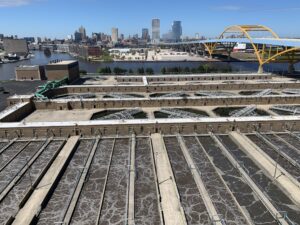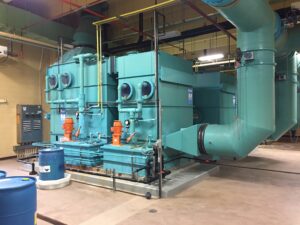What Makes a Wastewater Treatment Plant Odor Control System Successful? Lessons from the Field
 Two treatment plants can use the same odor control equipment but see very different results. In our experience at Webster Environmental Associates, this usually comes down to how the system was planned, installed, and maintained. A system might look good on paper but underperform in real-world conditions if the basics aren’t handled right. We’ve helped many facilities correct these issues and get back on track.
Two treatment plants can use the same odor control equipment but see very different results. In our experience at Webster Environmental Associates, this usually comes down to how the system was planned, installed, and maintained. A system might look good on paper but underperform in real-world conditions if the basics aren’t handled right. We’ve helped many facilities correct these issues and get back on track.
Odor control is not just about comfort. It’s tied to worker safety, regulatory compliance, and public perception. If your system isn’t working, you’ll hear about it—from the public, your team, or the regulators. That’s why we approach every wastewater treatment plant odor control project with careful attention to the details.
Why Some Systems Don’t Work Well
There are a few common reasons odor control systems don’t live up to expectations. First, the system might be treating the wrong source. We’ve seen plants spend time and money treating one process area while the odor is actually coming from another. This happens when sampling or site evaluations aren’t done carefully. Without the right data, decisions get made based on guesses.
Second, the technology used might not be the best fit. Biofilters, chemical scrubbers, and carbon systems each perform differently. A solution that works well for one site might not be right for another. If a system is designed around the wrong assumptions, it won’t perform the way it should.
Third, maintenance and operation play a big role. Even the best equipment needs monitoring and upkeep. If a plant doesn’t have trained staff or if the layout makes maintenance difficult, performance can drop fast. We often see this when systems weren’t designed with day-to-day use in mind.
What High-Performing Systems Have in Common
After designing and improving odor control systems for years, we’ve learned what makes the difference. The best-performing systems have a few things in common.
First, they include real-time monitoring. Hydrogen sulfide and ammonia levels change during the day and between seasons. A good system tracks those changes and lets operators make quick adjustments. This makes a big difference in both performance and compliance.
Next, airflow and duct sizing are critical. If the ducts are too small or if the airflow is uneven, the odor won’t reach the treatment equipment properly. Good design means consistent capture and treatment. We often find performance issues tied to small fans or poorly placed ductwork.
 Third, the system must use the right technology for the job. Biofilters are great for consistent odor loads from organic sources. Chemical scrubbers can handle stronger or more variable odors. Carbon filters are helpful for polishing low-level emissions. The key is matching the method to the odor type and volume. We don’t push one type of system—we choose based on what works best.
Third, the system must use the right technology for the job. Biofilters are great for consistent odor loads from organic sources. Chemical scrubbers can handle stronger or more variable odors. Carbon filters are helpful for polishing low-level emissions. The key is matching the method to the odor type and volume. We don’t push one type of system—we choose based on what works best.
Finally, good systems are easy to maintain. We design with access in mind. Filters should be reachable, fans should be serviceable, and control panels should be in the right spot. This saves time and helps staff keep the system running smoothly.
Field Experience That Informs Better Design
We’ve worked with many facilities that needed more than an off-the-shelf odor control setup. For example, at Conway Corporation’s wastewater treatment plant, we performed two rounds of testing in different weather conditions. The second round showed odor emissions nearly ten times higher than the first. Our findings revealed that the primary clarifiers were the biggest odor source. We used air dispersion modeling to compare different control options and designed a system that included a new bioscrubber and carbon adsorber. This improved performance and helped the facility manage odor more reliably.
Another example is our long-term partnership with the Toho Water Authority. Over the years, we’ve completed odor studies, system designs, and performance testing at multiple facilities. At the Sandhill plant, we identified key odor sources and designed targeted control systems for the headworks and influent structure. These improvements were based on detailed sampling, analysis, and modeling.
Plan for Better Results With WEA
Odor control at a wastewater treatment plant doesn’t have to be a guessing game. With the right data, planning, and follow-through, systems can work reliably and last for years. Webster Environmental Associates brings deep field experience, technical knowledge, and a practical approach to every project.
If you’re dealing with complaints, planning an upgrade, or building a new facility, we can help. We’ll visit your site, evaluate your odor sources, and help you decide which technology fits your needs. We also support long-term monitoring and system adjustments to keep everything working properly.
Contact us today to start building a wastewater treatment plant odor control system that works—now and in the future.
